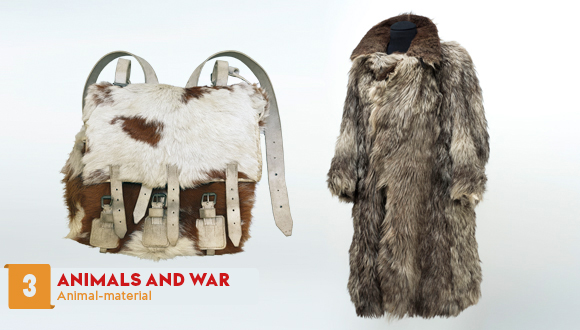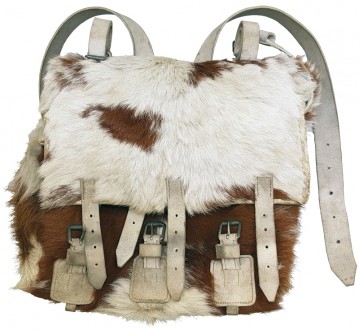A leopard skin rug used in the tent of Napoleon I during the Russian Campaign of 1812 © Paris, musée de l’Armée, Dist. RMN-GP / Pascal Segrette
Cowhide is used to protect army equipment and materiel because of its durability and water impermeability. © Paris, musée de l’Armée, Dist. RMN-GP / Pascal Segrette
Animal-material
Clothing and equipping the soldier
Animal raw materials were multiple and indispensable to man until the end of the nineteenth century, at which time they were gradually replaced with synthetic fibres. Obtaining animal raw material required a complex organization carried out in several phases, starting with hunting, fishing and the raising of animals and followed by the transformation of the materials by craftsmen who transformed or associated them in order to make finished products destined for human consumption.
In a military context, let’s take France from the end of the reign of Louis XIV up to WWII as an example, soldiers systematically wore a uniform made of woollen cloth – usually sheep. The outfit could have fur inlays and borders added to it in order so regimental units could be distinguished from one another, to protect the garment from the rain, the sun or the cold, such as the outfits of aircrafts pilots during the two World Wars. Shoes, and breeches covering the body from the waist to the knees, haversack, tents and the harnessing of domestic animals were at least, partly made of leather. Likewise, their headdresses were adorned with feathers, fur, and horsehair. Bone, ivory and mother-of-pearl were used to make or decorate weapons and tools used during the campaigns and craft jewels worn as a symbol of luck and protection.
Nowadays, animal and plant materials are being replaced more and more by synthetic materials. The inventors and scientists who design these new materials draw their inspiration from nature and seek to meet or exceed existing features in insect made materials such as the lightness of structures made by bees or the rigidity of spider threads and silk worm filaments (Bombyx mori) ; master the aerodynamics of flying creatures and the way birds waterproof their feathers.





Ajouter un commentaire